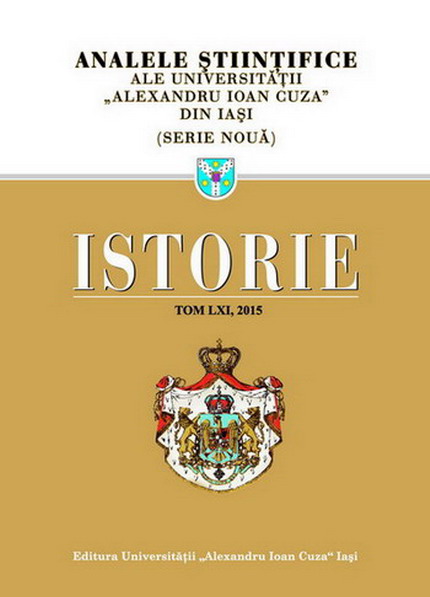Mecanismele unei agresiuni: prima ocupaţie sovietică a Letoniei, 1939-1941
The mechanisms of an aggression: The first Soviet occupation of Latvia, 1939-1941
Author(s): Bogdan-Alexandru SchiporSubject(s): History, Military history, Recent History (1900 till today)
Published by: Editura Universităţii »Alexandru Ioan Cuza« din Iaşi
Keywords: Baltic states; Soviet Union; annexation; aggression; occupation.
Summary/Abstract: The conclusion of the Ribbentrop-Molotov Pact and the configuration of the spheres of influence of the two totalitarian great powers, Nazi Germany and the Soviet Union, in Eastern Europe and the Baltic region, followed by the outbreak of war in Europe and the disappearance from the map of Poland in just a few weeks have considerably changed Latvia’s and, obviously, others’ position, in autumn 1939 and the germs of Soviet aggression could already be noticed. Gradually, until June 1940, it became clear that the conclusion of the mutual assistance pacts for Moscow only represented a first step towards their objective to annex the three Baltic States to the Soviet Union.The occupation of Latvia, Estonia and Lithuania by the Soviet Union in June 1940 was put into practice in a moment when the eyes of all Europe and the world were riveted by the events in the west of the continent. Still, despite these more or less covert attempts, the annexation of Latvia by the Soviet Union in 1940 remains an illegal and illegitimate act, because it was imposed by a foreign power, whose armed forces stationed in Latvia in large numbers.Even if, as a result of these actions, Latvia had lost its independence and sovereignty, many states refused to acknowledge the disappearance of the Baltic State as a political entity. The diplomatic representation of Latvia has continued in Washington and London, due to the appointment of the Latvian minister in London, by the government in Riga, as extraordinary and plenipotentiary representative of the country on June 17, 1940.Moreover, repressions in Latvia soon began after the country's occupation by the Red Army on June 17, 1940. If in June 1940 it was just the beginning, only after a month, the arrests and deportations of Latvia’s political elite had began.The estimates on the total population losses during the first Soviet occupation due to all causes – deportations, conscriptions in the Red Army, massacres and disappearances – are converging to an approximate figure of 35,000 people in Latvia, of which about 7,000 women and 4,000 children.We must say that for Latvia July the 1st 1941, when German troops entered Riga, was seen as a day of liberation. It should also be pointed out, in this regard, that the second and third occupations suffered by Latvia in World War II were called by the invaders as "liberations". The German troops had freed the country from the tyranny of the Bolshevist and later, in 1944, the Red Army had liberated the Baltic state from the Nazi oppression. Both assertions contain a degree of truth, but none offered freedom for Latvia and the Latvians.
Journal: Analele Ştiinţifice ale Universităţii »Alexandru Ioan Cuza« din Iaşi. Istorie
- Issue Year: 2015
- Issue No: 61
- Page Range: 517-533
- Page Count: 17
- Language: Romanian
- Content File-PDF

